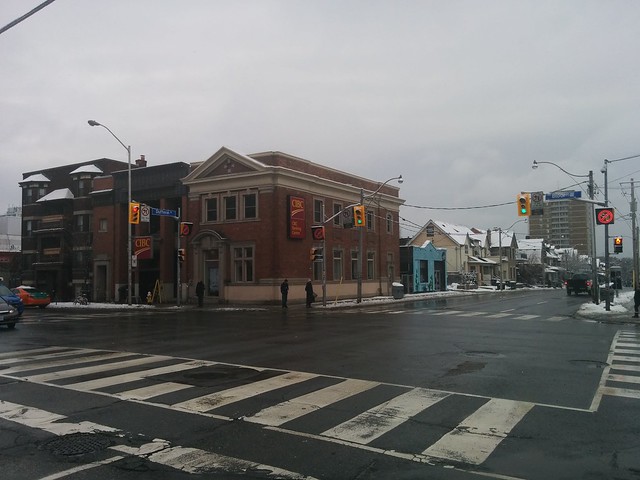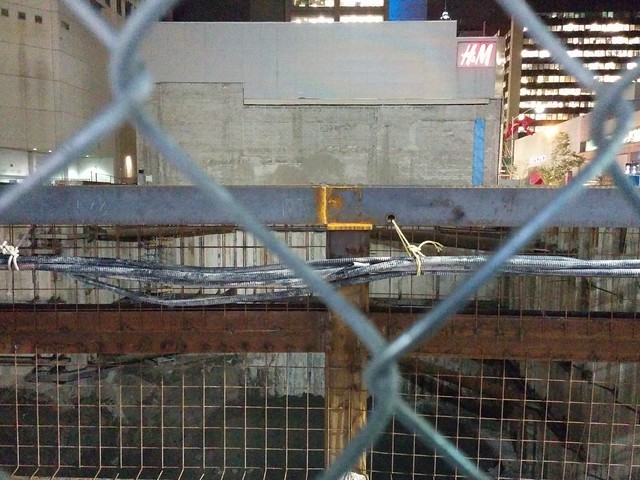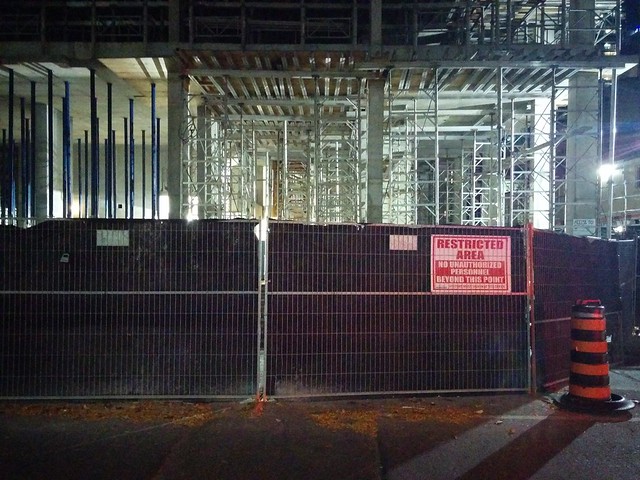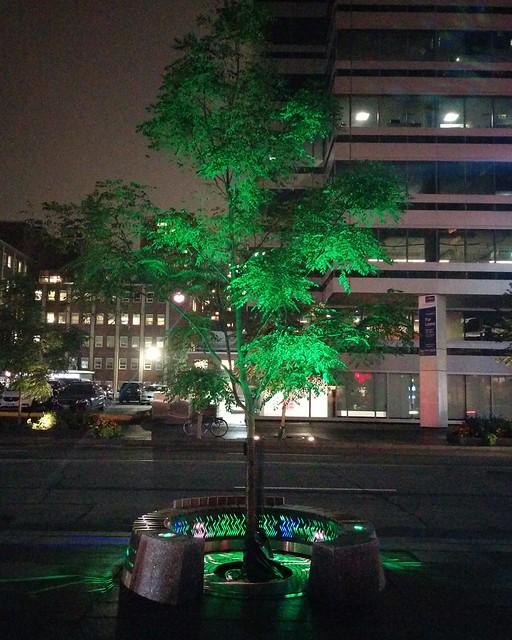- blogTO notesa corner of Etobicoke, bounded by Bloor and Kipling and the Queensway and Islington, is now being banded as the neighbourhood of EtobiCo.
- Sully's Boxing Gym, once a neighbour of mine on Dupont, is now on Dundas Street West. blogTO reports.
- Sean Marshall takes a look at the problems of Don Mills Road for people not in cars, here.
- The Toronto Star explains a new study exploring why more people in the city do not bike to work, here.
- The sort of landlord-tenant conflict and mistrust described here cannot contribute to a productive city. The Toronto Star reports.
- Metrolinx shares a glorious map depicting traffic and trends at the different stops on its many routes.
- NOW Toronto notes how Doug Ford may yet enable carding-like practices by police.
- The criticism by an Ontario government minister of the state of Ontario Place is worrisome. The Toronto Star reports.
- Urban Toronto shares a photo of the construction at the vast Hive site downtown.
- George Popper at Spacing Toronto looks at three neighbourhoods where housing in Toronto can really densify indeed must densify, including the Bloor-Danforth corridor.
When I got off at Castle Frank Station last night around 5 o'clock, evening was already beginning to fade into twilight. The yellow leaves of fall stood out in the dim, standing east of the downtown along Yonge as the rush hour traffic inched still further east.

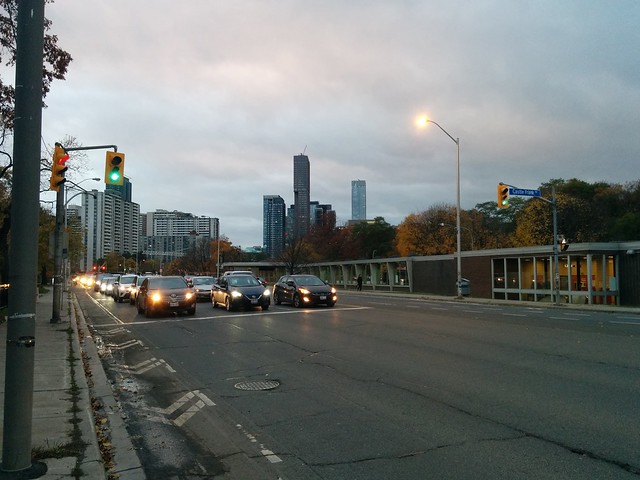
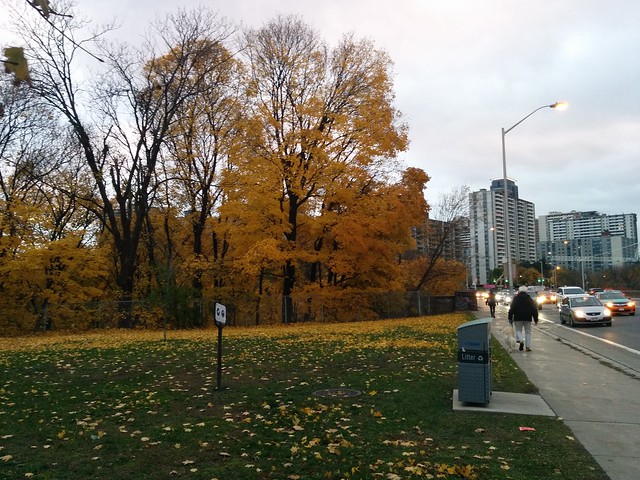







It had been too long since I had strolled up or down Philosopher's Walk. Early Wednesday evening, I chose to walk north, from Harbord to Bloor.
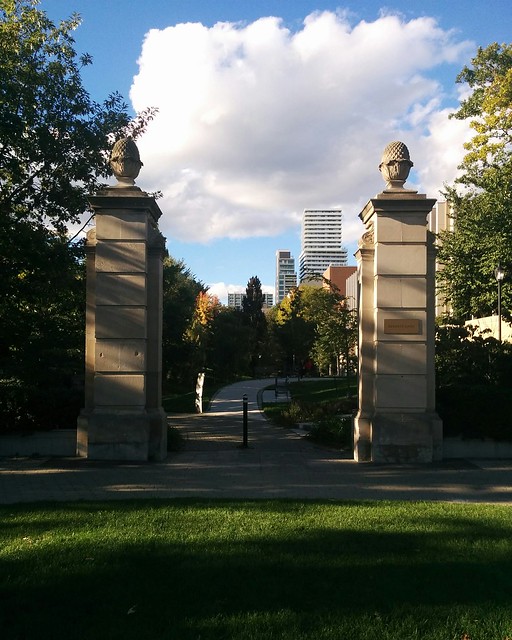
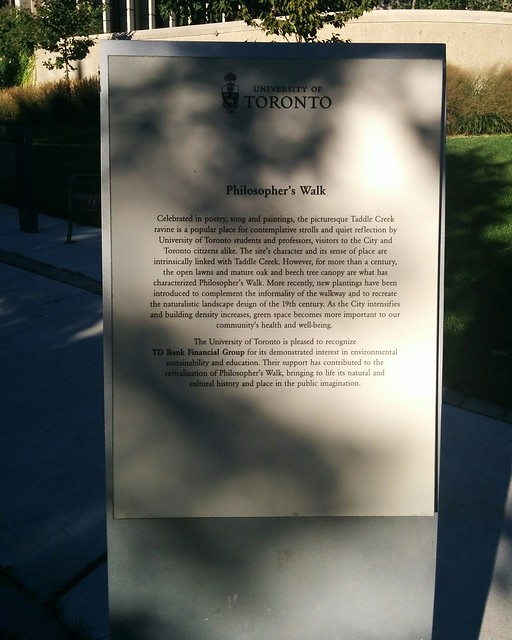
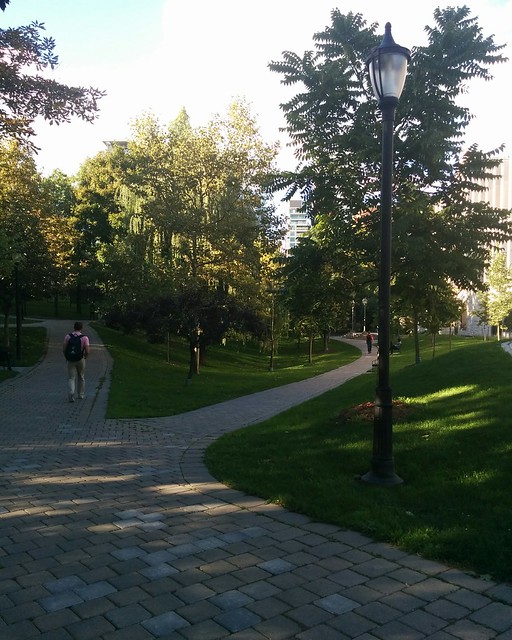
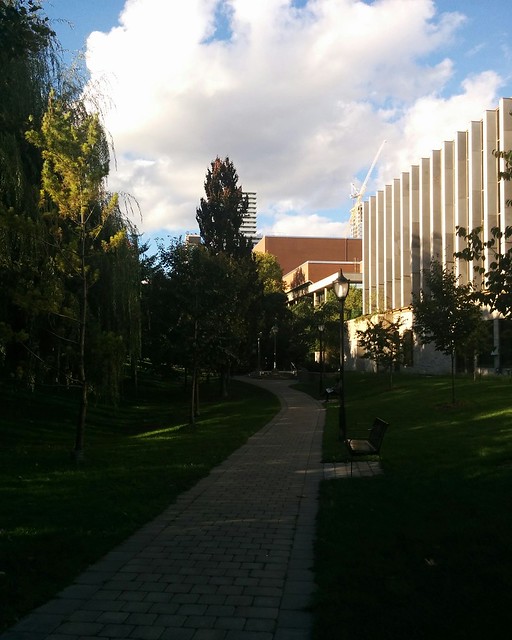
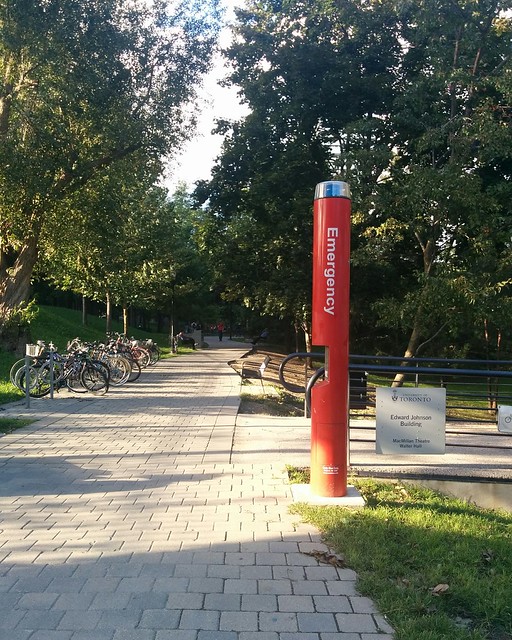
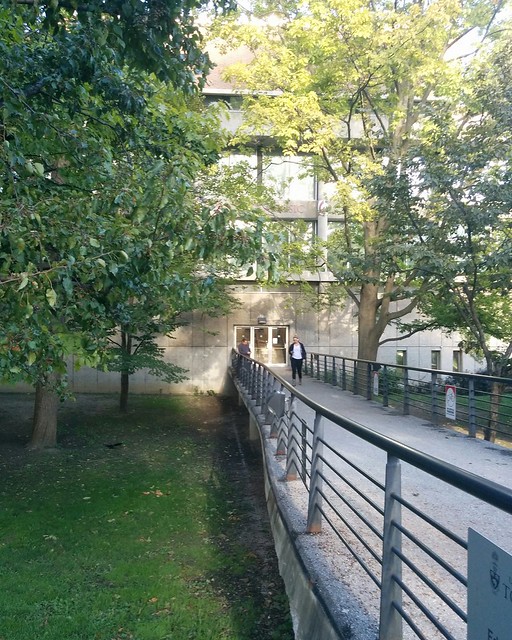

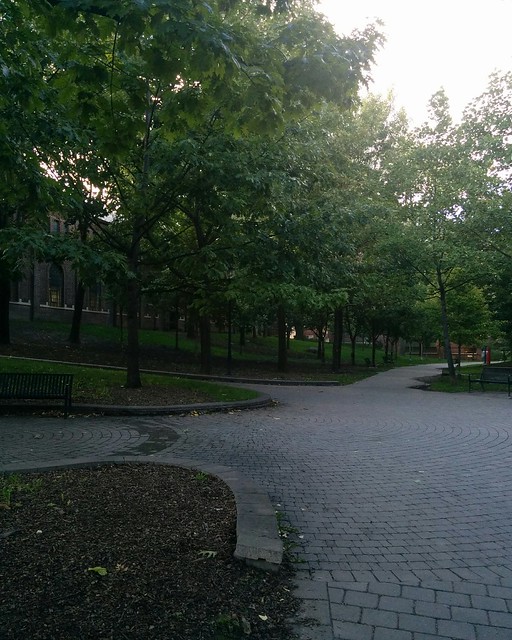
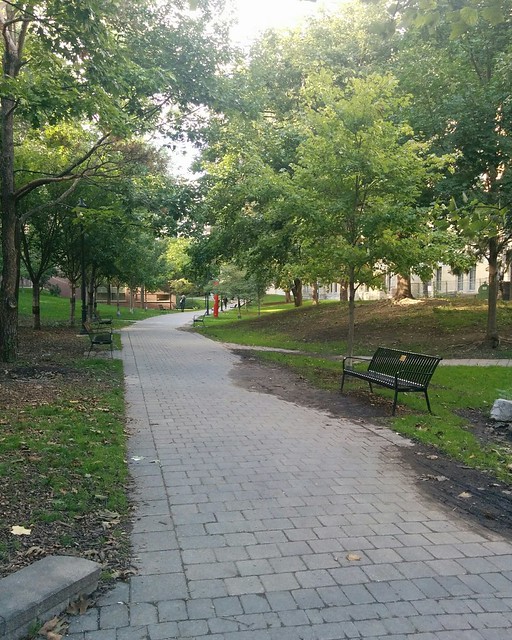












The famously complex Six Points intersection, where Bloor Street West meets with Dundas Street West as that artery arcs down from the north and the two intersection with Kipling Avenue, is set for a thorough redevelopment. It's about time, development issues aside. How can drivers even navigate this intersection? Self-driving cars should be tested here.
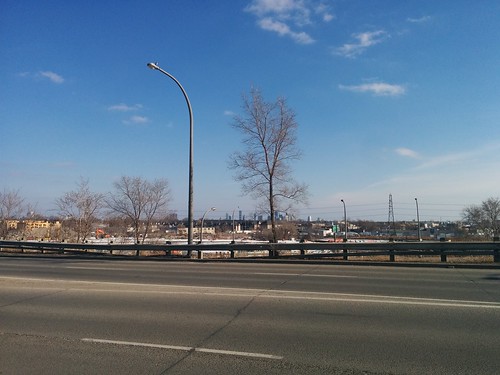
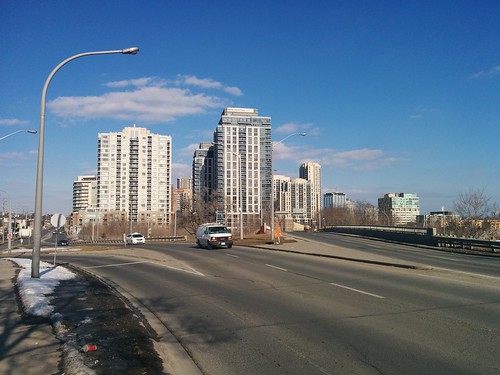
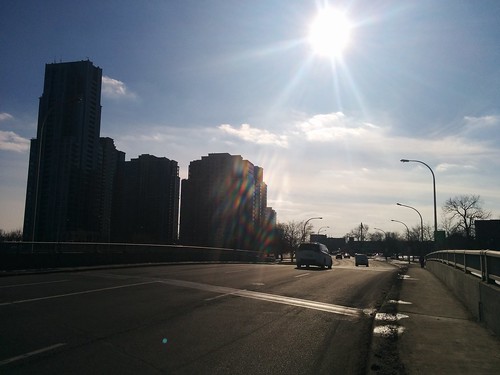
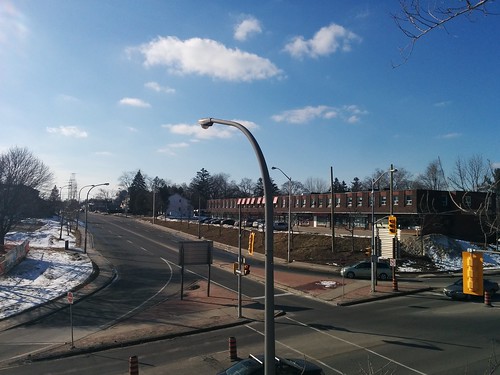
- At Torontoist, Jake Tobin Garrett suggests how condo construction can be made to pay for a Rail Deck Park.
- Christopher Hume notes how the King Street transit pilot represents a huge shift in thinking in Toronto, over at the Toronto Star.
- At NOW Toronto, Hamish Wilson suggests that the bike lanes on Bloor are but a fragment of the network that could have been built city-wide.
- Rob Ferguson notes plans at the level of the Ontario provincial government to do better planning for GTA transit, over at the Toronto Star.
- Should, as the Toronto Region Board of Trade suggests, the province take over GTA transit? Certainly the province is capable of greater scope than any one city can provide, but is it responsive enough? The Toronto Star reports.
- blogTO notes that some would like a single fare for transit in Toronto.
- News of the internal Metrolinx report concluding a one-stop Scarborough subway extension would not be viable should not be controversial. But then, that's Toronto transit. The Toronto Star reports.
- Chris Selley hopes that the approval of permanent bike lanes along Bloor means that the cyclist/driver war will come to an end, over at the National Post.
- Torontoist reports on the identities of some of the white supremacists putting up alt-right posters around Toronto, with photos.
- Toronto Life notes that someone in the Junction has put up an unfinished basement apartment for $500 a month. (The tenant would be expected to finish the job.)
I quite like Dave Leblanc's feature in The Globe and Mail describing efforts to revitalize the stretch of downtown Toronto where Parliament Street meets Bloor Street East.
Toronto, it is widely known, is a movie stand-in for Chicago, New York, and even Southern California (The Bridle Path has played Beverly Hills). Until recently, a long, triangular patch of land near Bloor and Parliament was a shoo-in for Detroit: a shabby Victorian stood alone in a weedy field, and, half a block away, a dead-end street sported a row of falling-down, boarded up semi-detached homes.
The area bounded by Sherbourne, Parliament, Howard and Bloor streets had been that way for two decades, give or take. In 2006, The Globe’s Alex Bozikovic wrote that the stub of Glen Rd. between the Bloor Street overpass and Howard Street was rife with hookers, drug dealers and crackheads. One home had a “large hole” in its roof; another had a tree taking root on its rotting, wet shingles. “I feel that the city has abandoned this neighbourhood,” one Glen Rd. resident told Mr. Bozikovic at the time.
It was a rare spot of neglect in an otherwise prosperous city. A few years later, however, Lanterra Developments handed heritage superheroes ERA Architects an assignment: Make something out of this.
“They wanted to do this development at the outer parts of the site, but they couldn’t really do anything with the centre just rotting,” remembers ERA’s Scott Weir, “so the first phase of this was ‘let’s make a beautiful district, whatever it takes to do that,’ so they did restoration on all of these almost un-repairable buildings.”
One of those “almost” dead buildings was the hulking, three-storey Victorian home that stood alone at 76 Howard St. After years of planning, Laurie McCulloch house movers pulled it, slowly, to its new digs at No. 28 just a few weeks ago. Hello, neighbours!
[BLOG] Some Saturday links
Nov. 19th, 2016 08:23 am- blogTO notes that retail space on Bloor Street in Yorkville is not only the priciest in Canada, but among the priciest in the world.
- Centauri Dreams notes how fast radio bursts, a natural phenomenon, can be used to understand the universe.
- Dangerous Minds looks at a Kate Bush music performance on Dutch television in 1978.
- The Dragon's Gaze links to an analysis of the asteroids disintegrating in orbit of WD 1145+017.
- The Dragon's Tales notes evidence from meteorites that Mars has been dry and inhospitable for eons.
- The Everyday Sociology Blog looks at the way we construct time.
- Language Log highlights a 1943 phrasebook for English, Spanish, Tagalog, and Hokkien.
- Lawyers, Guns and Money notes the resistance of the Tohono O'odham, a border people of Arizona and Sonora, to a wall.
- The LRB Blog looks at a curious painting claiming to depict the cause of England's greatness.
- Marginal Revolution notes the sheer scale of mass tourism in Iceland.
- Strange Maps shares an interesting map depicting support for Clinton and Trump, showing one as a continental landmass and the other as an archipelago.
- Towleroad praises the musical Falsettos for its LGBT content (among other things).
- Window on Eurasia looks at controversy over ethnonyms in Russian, and argues Putinism is a bigger threat to the West than Communism.
Torontoist reports on the Bloor bike lanes.
Thigns changed.
In May, Council voted overwhelmingly in favour of the installation of a Bloor Street bike lanes pilot project, much to the joy of Toronto cyclists. The street is an active artery for more than 3,000 cyclists daily, and the fight for a safer ride from Shaw Street to Avenue Road has been 40 years in the making.
The bike lanes are under construction, and while the flexipost bollards haven’t been installed yet, cyclists can test-ride the newly painted lines. Some commuters, however, are not yet accustomed to sharing the road.
Torontoist‘s Corbin Smith took his bike out for a spin yesterday, and found that—to little surprise—being a cyclist isn’t easy in Toronto, even with new bike lanes.
Smith rode from just west of Shaw past Avenue Road, where the the pilot project begins and ends. He ended his commute around Church Street.
At first, it was smooth sailing: the streets were fairly empty, and he had the lanes to himself on the west end.
Thigns changed.
The Toronto Star's Jennifer Pagliaro notes that construction of the Bloor Street bike lanes is impending.
Construction for a bike lanes pilot project on Bloor St. will start next week.
A construction notice from the city says work between Shaw St. and Avenue Rd. will begin Aug. 2 after council approved the pilot this May after years-long advocacy from the cycling community.
The city says all on-street parking will be removed beginning Aug. 1 at 6 p.m. with traffic temporarily reduced to one lane in each direction so workers can install new painted bike lanes and flexi-post bollards. The city will also install new signs with updated parking rules.
Once the bike lanes are installed, parking will be available on at least one side of the street with at one lane of traffic in each direction and dedicated turn lanes at major intersections.
The Toronto Star's Ben Spurr reports. All I can say is that this is a great plan. Will it be enacted? This remains to be seen.
Bike lanes could be coming to eight of Toronto’s busiest streets if the city’s new 10-year cycling plan pans out.
The plan, released in a city report Monday, identifies 525 km of new bike lanes, cycle tracks, trails and other routes that, if built, would create the kind of connected network Toronto’s bike advocates have long pushed for.
The majority of that infrastructure, some 280 km, would be in the form of painted or physically separated bike lanes on busy streets, while 190 km of it would be cycling routes on quieter roads. The remaining 55 km would be “sidewalk-level boulevard trails” running alongside major thoroughfares. The plan would cost an estimated $153.5 million over the next decade.
“Over a 10-year period we would roughly look at doubling the amount of cycling routes in the city,” said Stephen Buckley, the city’s general manager of transportation services. He said that to date the city’s planning of its bike network has been disjointed, and his goal was to “develop a full network that we could get behind.”
The guiding principles are connecting existing cycling routes, expanding the network, and improving infrastructure already in place, Buckley said.
Perhaps the most striking feature is a proposal to study bike infrastructure on eight major corridors, including Bloor St./Dupont St. from Dundas St. to Sherbourne St.; Danforth Ave. from Broadview Ave. to Kingston Rd.; and Yonge St. all the way from Steeles to Front St., almost the full length of the city.
